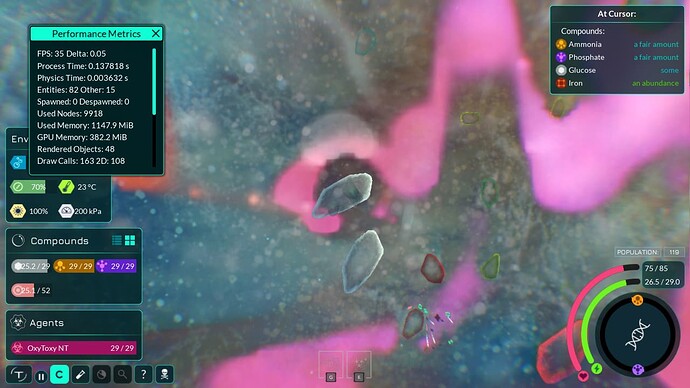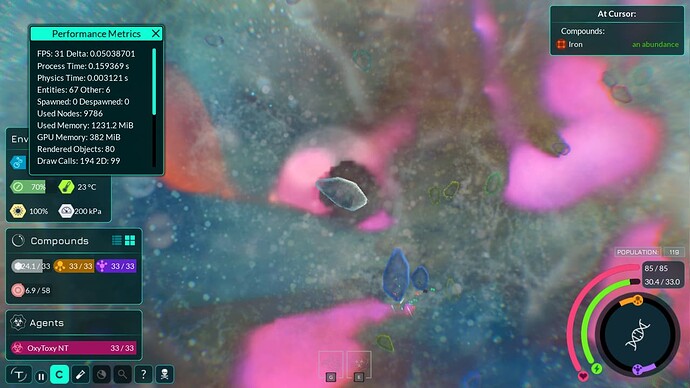I disabled organelle graphics. It only gave me an extra 10 FPS in this save (by lowering the number of draw calls by about 800 per frame):
So while rendering a bunch of individual (transparent) organelles does impact performance, removing that entirely does not fix the performance.
So Godot needing to sort and issue draw calls for the individual organelles doesn’t seem to be our biggest performance problem.
One other potential thing people said is that we should try to do something about the fact that each individual organelle is a sphere collision that is added to the overall shape of a cell. Basically what we could do is generate a mesh collision from the organelles and use just 2 shapes one for general and one for pilus collisions (or maybe keeping pilus collisions as is would be easier and not impact performance that much).

